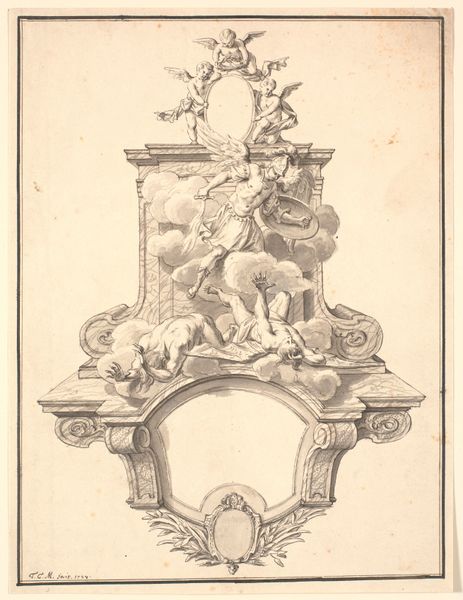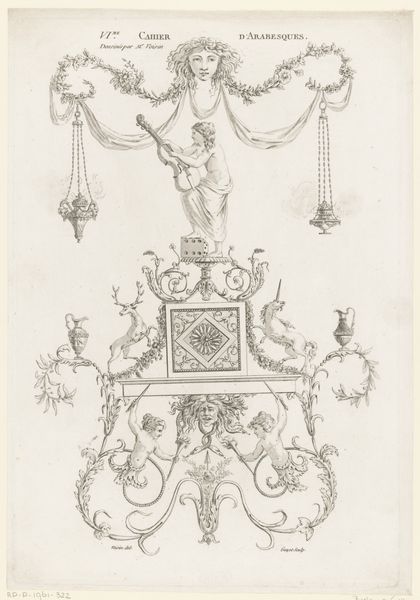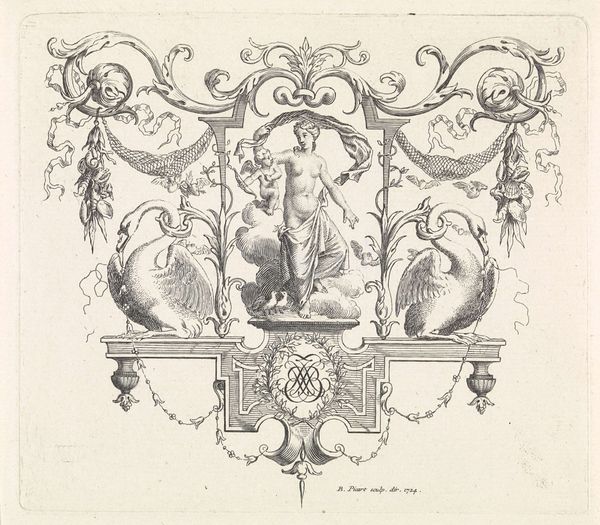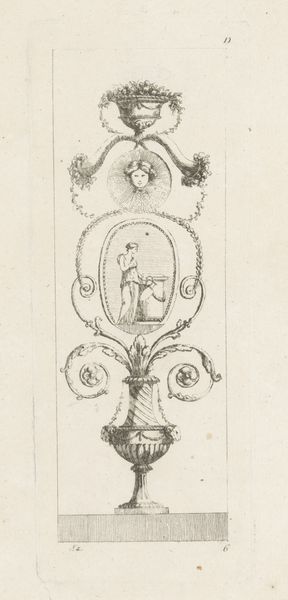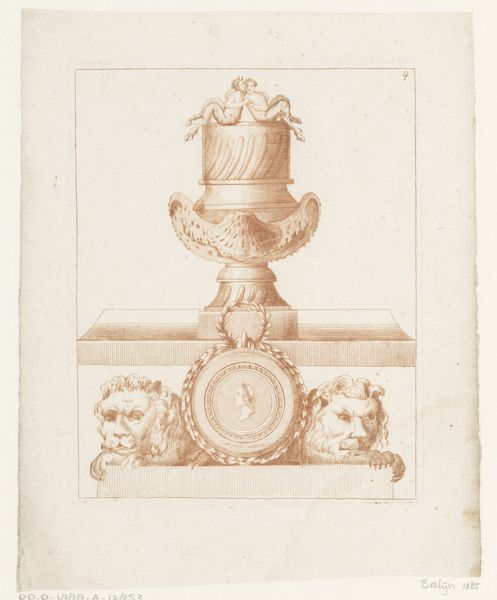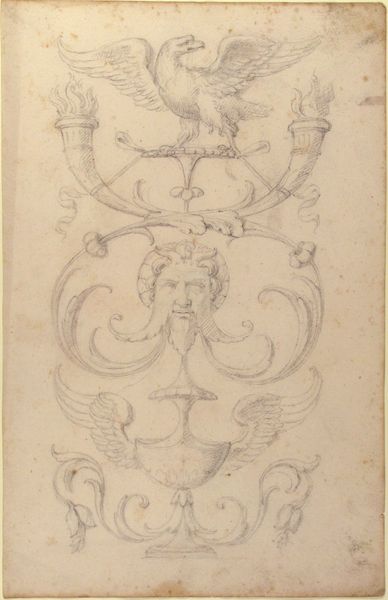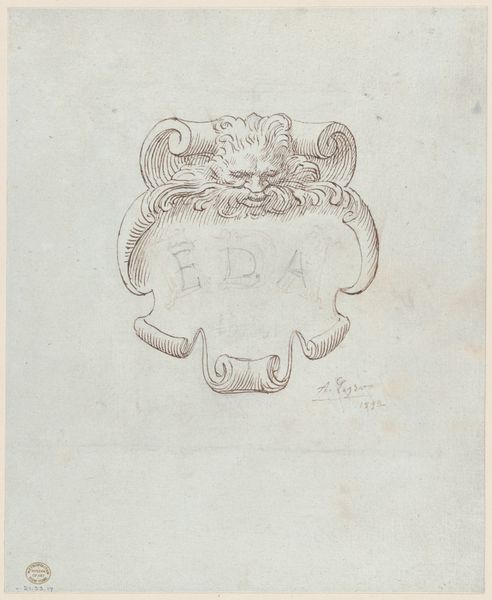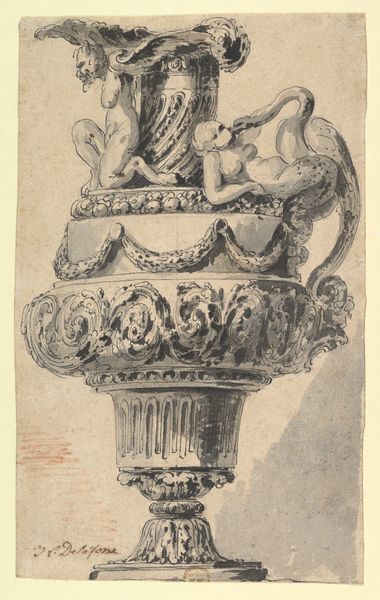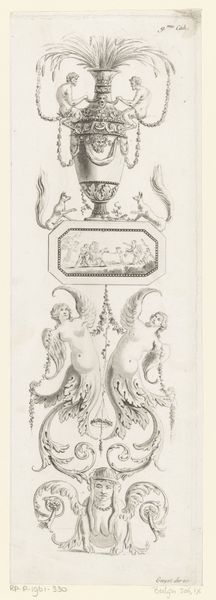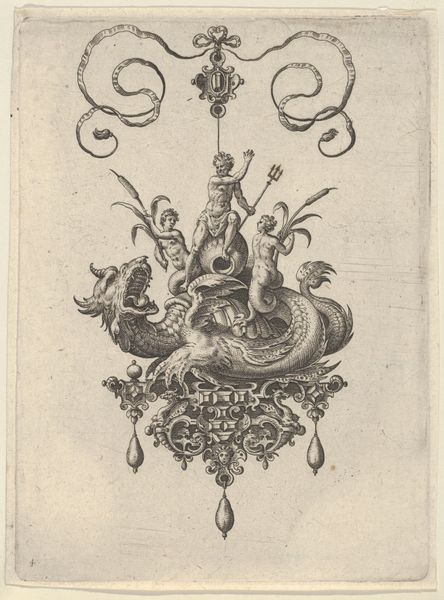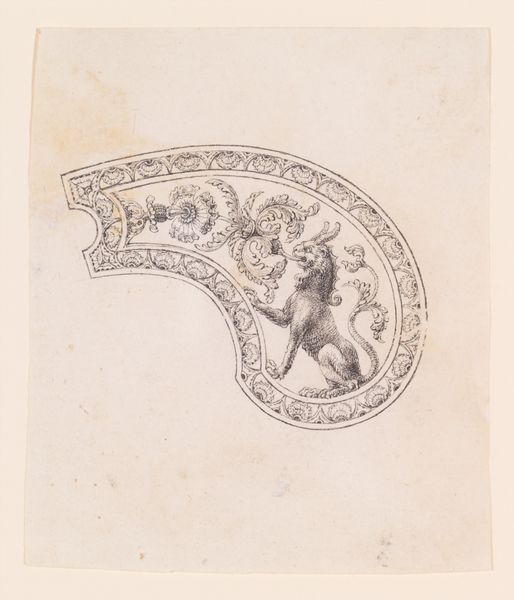
drawing, ink
#
drawing
#
neoclacissism
#
landscape
#
figuration
#
form
#
ink
Dimensions: height 288 mm, width 204 mm
Copyright: Rijks Museum: Open Domain
Laurent Guyot made this drawing, Arabesques and Lion, with pen and brown ink, around 1770-1800. It represents a resurgence of interest in classical forms, particularly arabesques, which became fashionable for interior decoration across Europe. The drawing encapsulates the cultural fascination with antiquity during the late 18th century, when archaeological discoveries at sites like Pompeii and Herculaneum fueled a desire to revive classical aesthetics. This image is not merely decorative; it is deeply embedded in the social and cultural fabric of its time. The lion, a symbol of strength and nobility, is juxtaposed with delicate arabesques and classical motifs, creating a visual dialogue between power and refinement. The Rijksmuseum provides an ideal site to study these kinds of drawings. By considering its historical context and using resources available to us, we can better understand the social, cultural, and institutional forces at play in the creation and reception of such works.
Comments
No comments
Be the first to comment and join the conversation on the ultimate creative platform.
